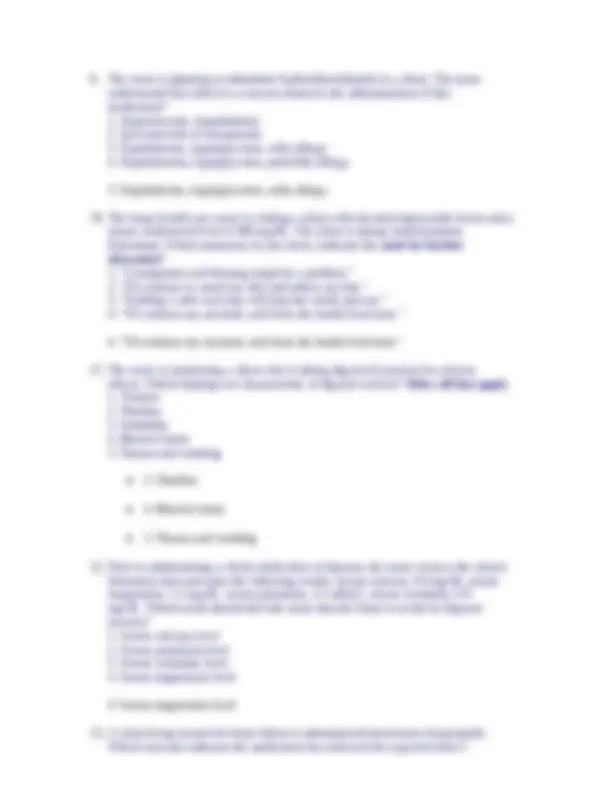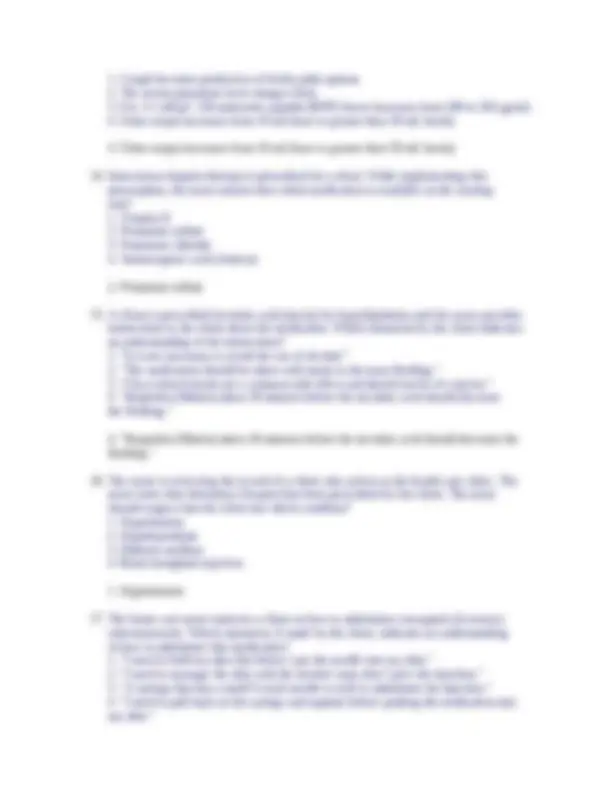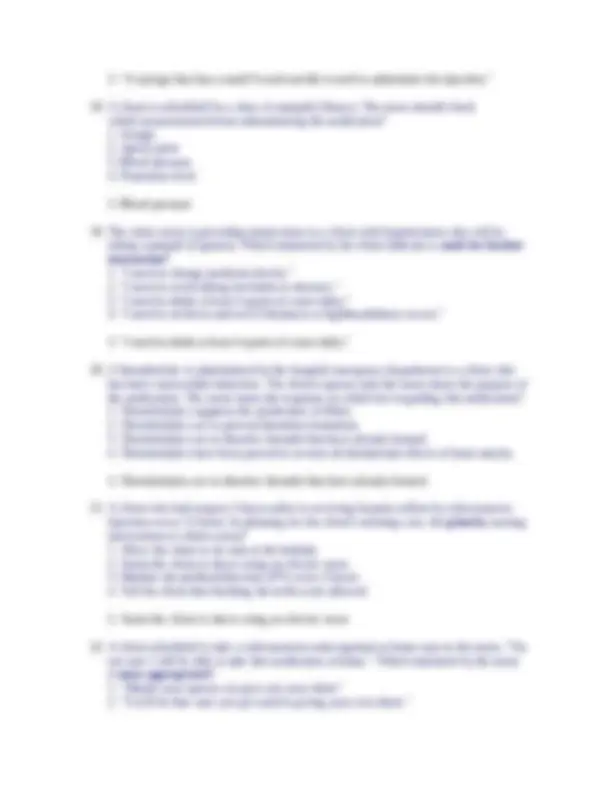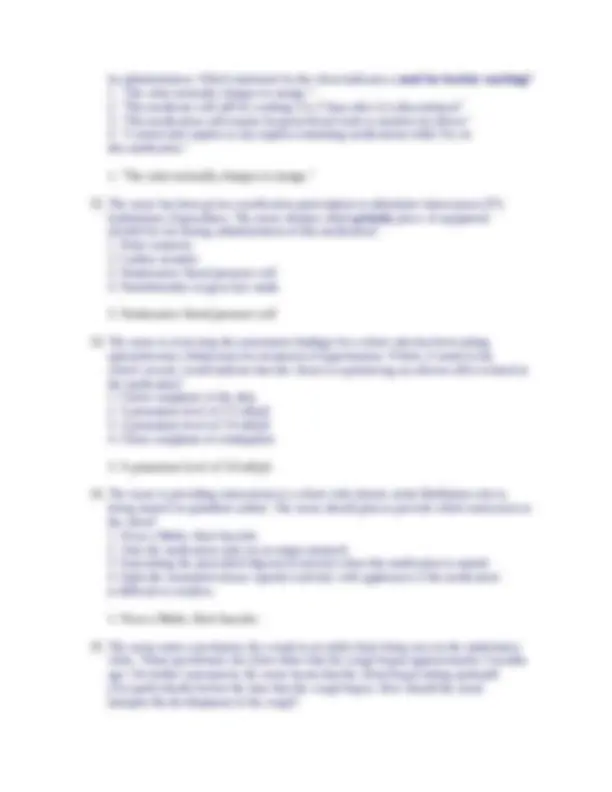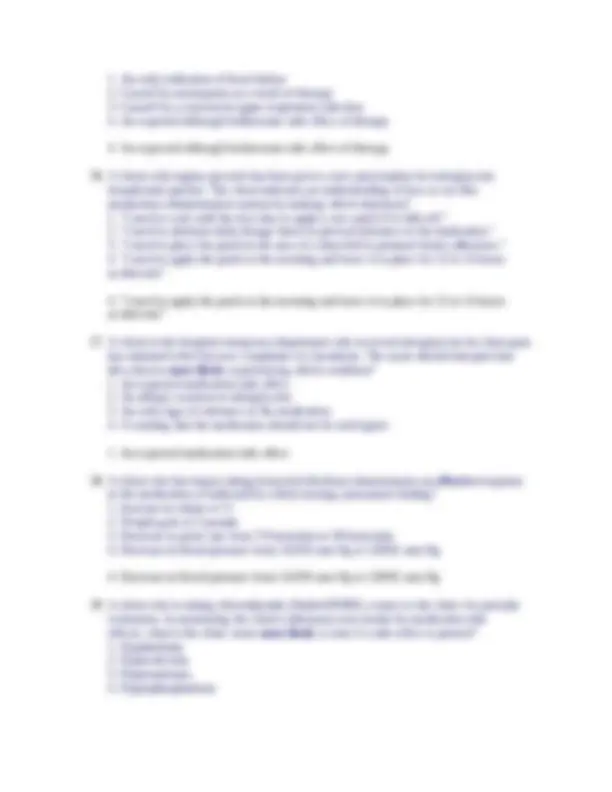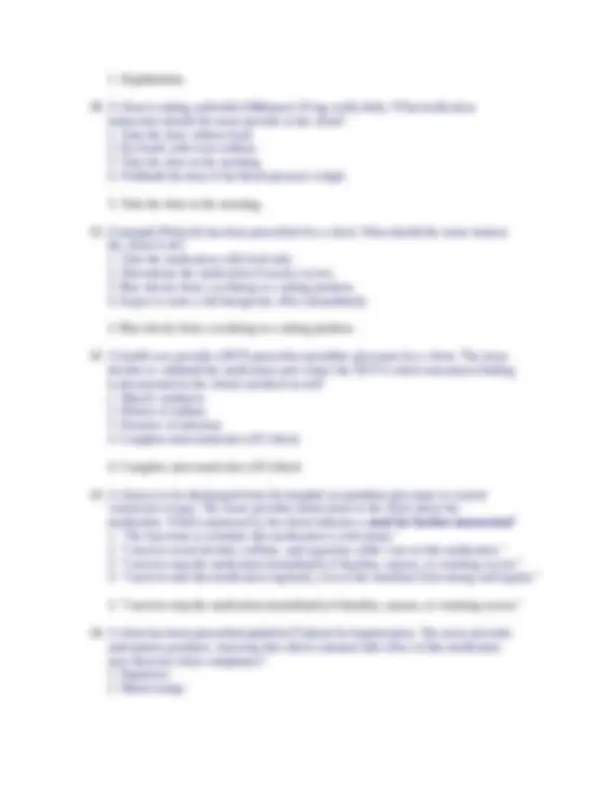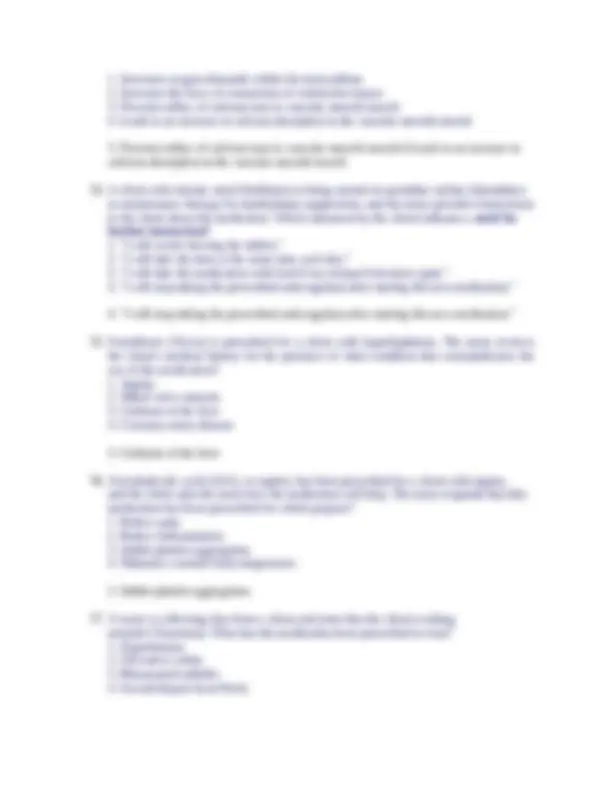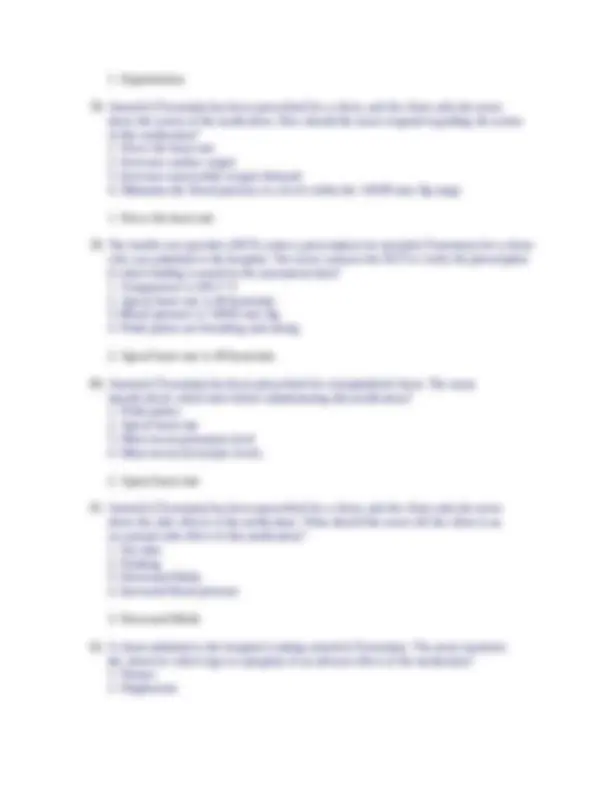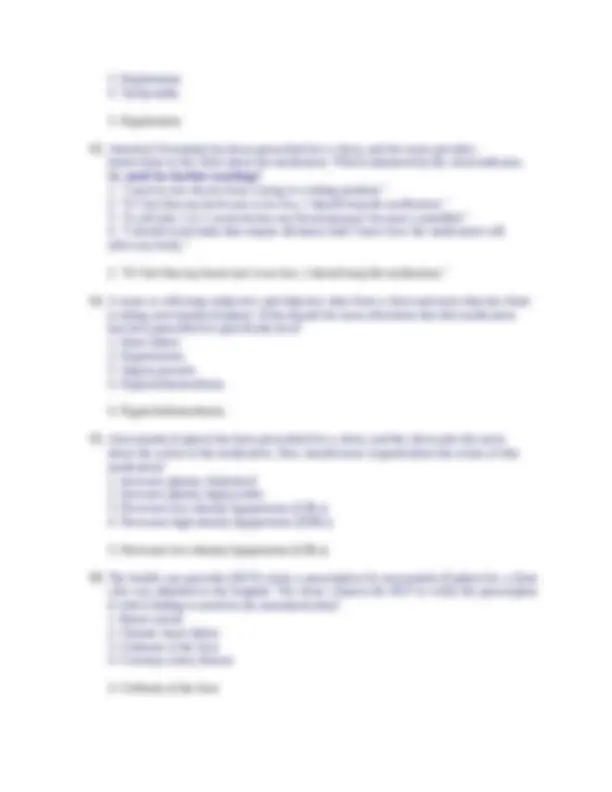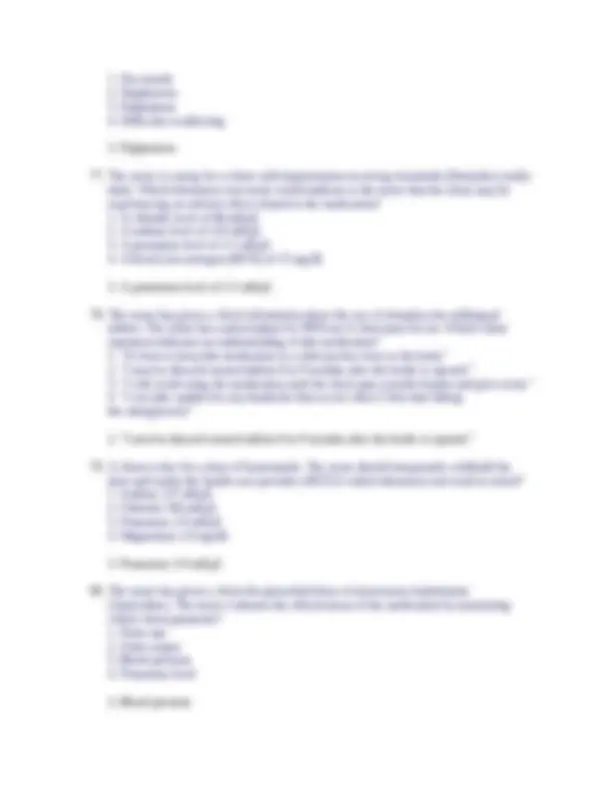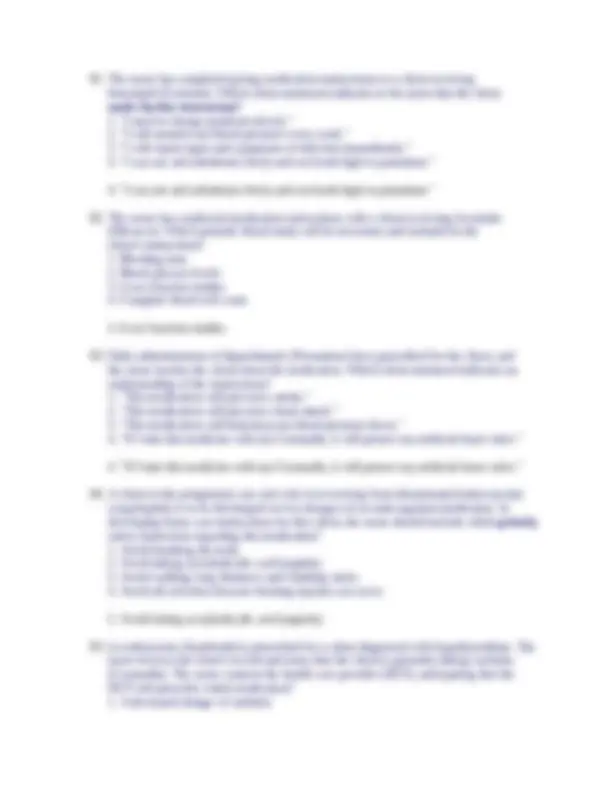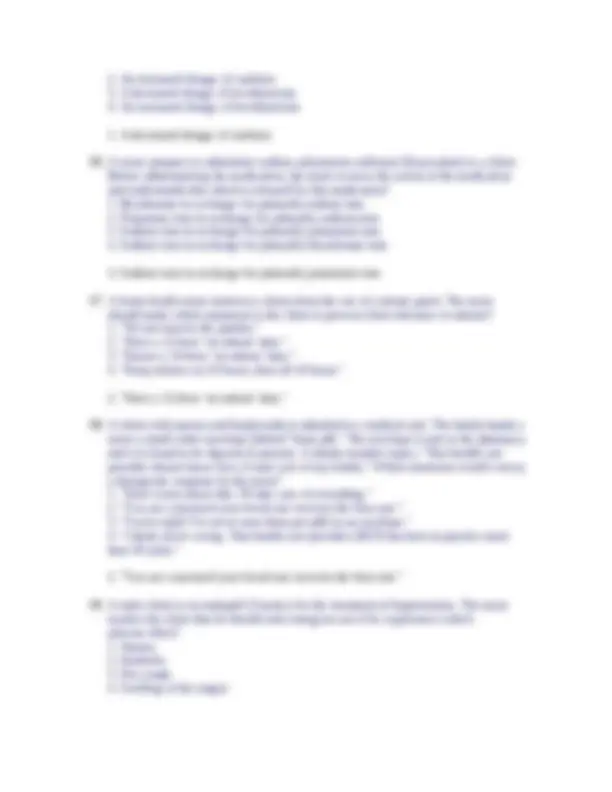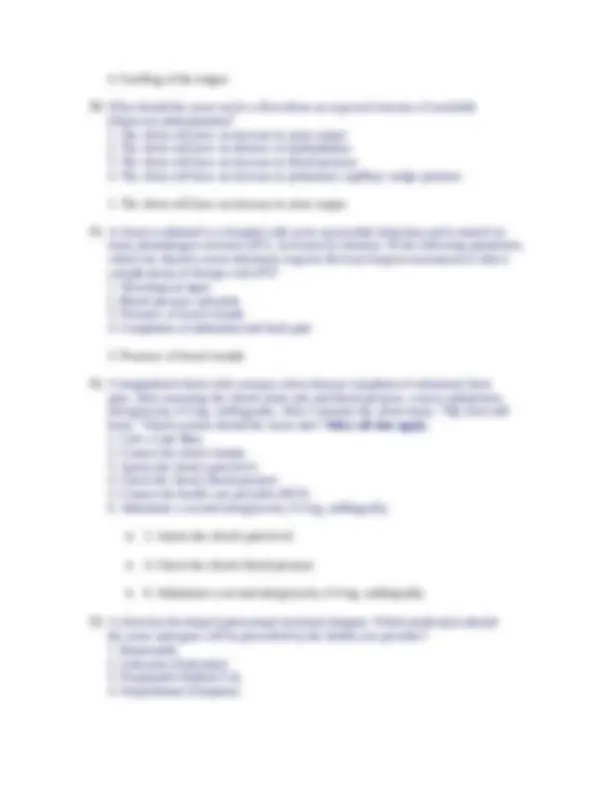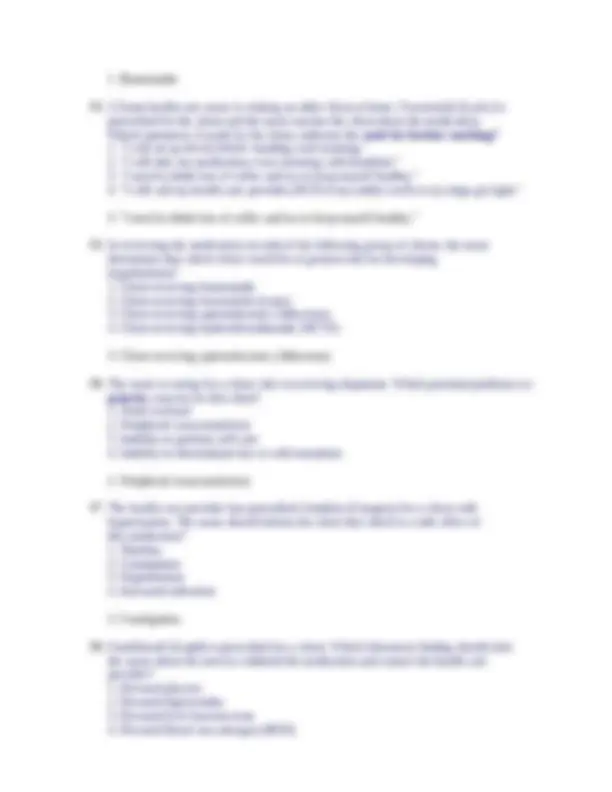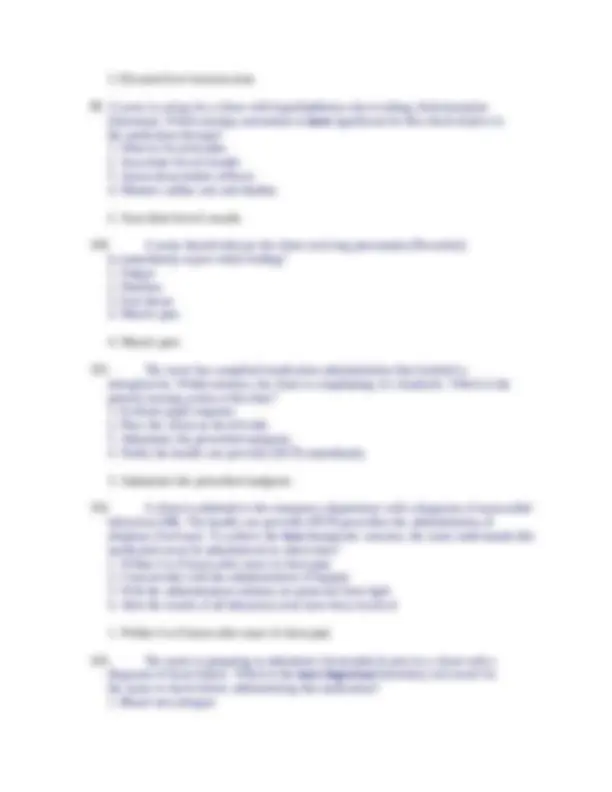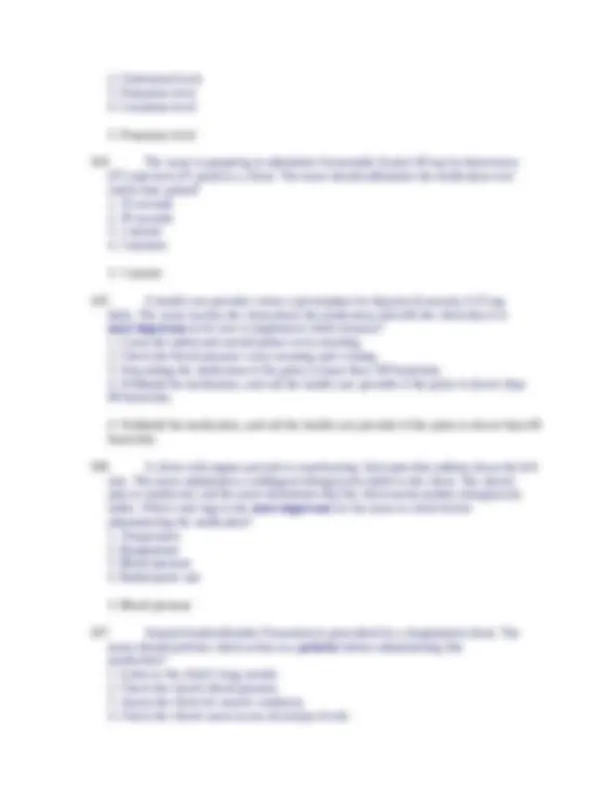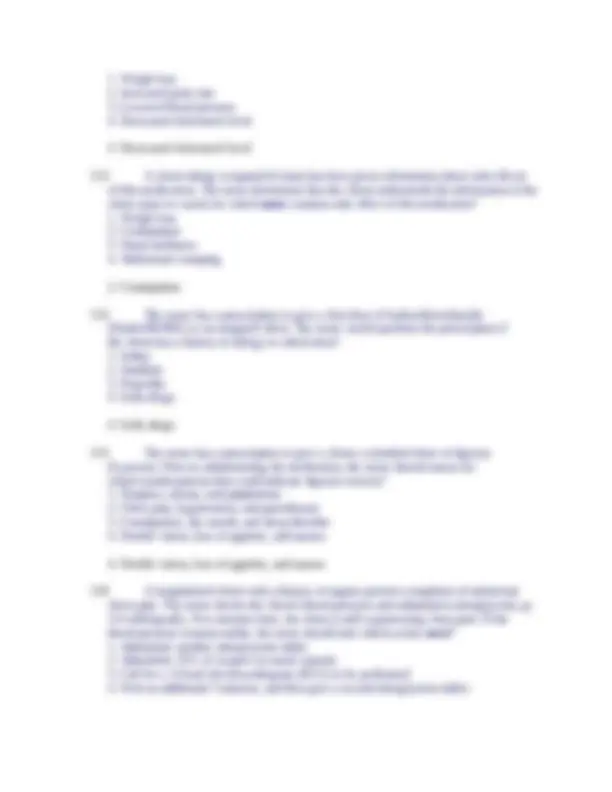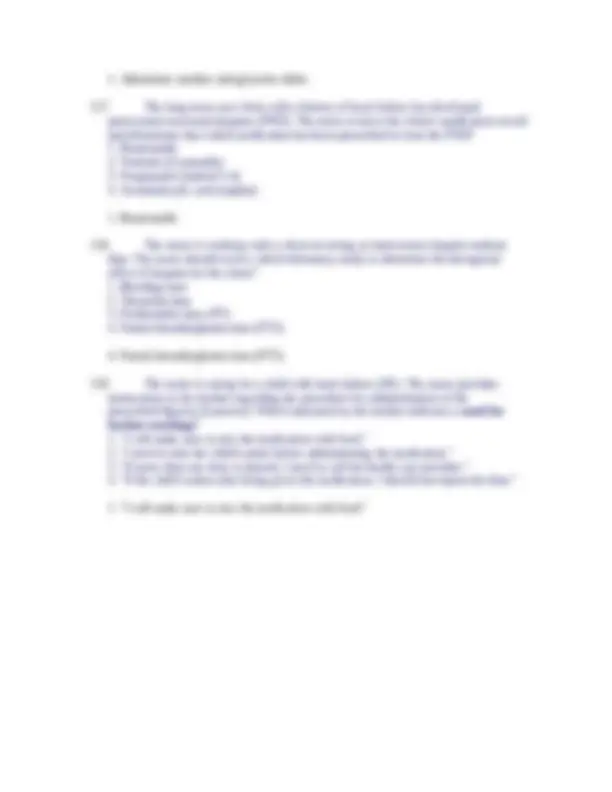Advanced Practice Nursing: Cardiovascular
Pharmacology Assessment
1. The nursing student needs to administer potassium chloride intravenously as prescribed
to a client with hypokalemia. The nursing instructor determines that the student is
unprepared for this procedure if the student states that which action is part of the plan
for preparation and administration of the potassium?
1. Obtaining an intravenous (IV) infusion pump
2. Monitoring urine output during administration
3. Preparing the medication for bolus administration
4. Ensuring that the medication is diluted in the appropriate amount of normal saline
3. Preparing the medication for bolus administration
2. A client with atrial fibrillation is receiving a continuous heparin infusion at 1000
units/hour. The nurse determines that the client is receiving the therapeutic effect
based on which results?
1. Prothrombin time of 12.5 seconds
2. Activated partial thromboplastin time of 60 seconds
3. Activated partial thromboplastin time of 28 seconds
4. Activated partial thromboplastin time longer than 120 seconds
2. Activated partial thromboplastin time of 60 seconds
3. The nurse provides discharge instructions to a client who is taking warfarin sodium
(Coumadin). Which statement, by the client, reflects the need for further
teaching?
1. "I will avoid alcohol consumption."
2. "I will take my pills every day at the same time."
3. "I have already called my family to pick up a Medic-Alert bracelet."
4. "I will take Ecotrin (enteric-coated aspirin) for my headaches because it is coated."
4. "I will take Ecotrin (enteric-coated aspirin) for my headaches because it is coated."
4. A client who is receiving digoxin (Lanoxin) daily has a serum potassium level of 3
mEq/L and is complaining of anorexia. The health care provider prescribes
determination of the serum digoxin level to rule out digoxin toxicity. The nurse checks
the results, knowing that which value is the therapeutic serum level (range) for digoxin?
1. 0.5 to 2 ng/mL
2. 1.2 to 2.8 ng/mL
3. 3.0 to 5.0 ng/mL
4. 3.5 to 5.5 ng/mL
1. 0.5 to 2 ng/mL
5. A client is being treated with procainamide for a cardiac dysrhythmia. Following
intravenous administration of the medication, the client complains of dizziness.
What intervention should the nurse take first?
1. Measure the heart rate on the rhythm strip.

